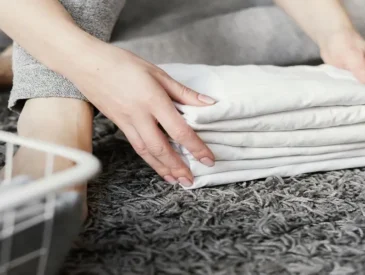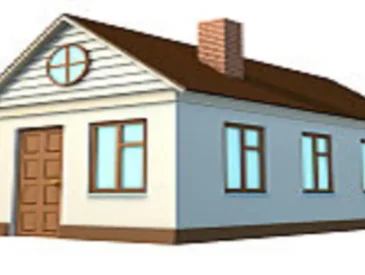Mold growth in the home poses significant health risks and can lead to structural damage. Effective mold remediation is essential for maintaining a safe and healthy living environment. This comprehensive guide provides detailed steps to eliminate mold from your home, ensuring a thorough and lasting solution.
Understanding Mold Growth
Mold is a type of fungus that thrives in moist, humid conditions. It can grow on various surfaces, including walls, ceilings, carpets, and furniture. Common indoor molds include Cladosporium, Penicillium, and Aspergillus. Identifying the source of moisture is crucial in preventing mold growth and ensuring successful remediation.
Identifying Mold Infestation
Signs of Mold Presence
- Visible Growth: Mold often appears as black, green, or white spots on surfaces.
- Musty Odor: A persistent, unpleasant smell can indicate hidden mold.
- Health Symptoms: Allergic reactions, such as sneezing, coughing, and skin irritation, may be linked to mold exposure.
Conducting a Mold Inspection
- Visual Inspection: Thoroughly examine areas prone to moisture, such as bathrooms, kitchens, and basements.
- Moisture Mapping: Use moisture meters to detect high humidity levels and identify hidden mold.
- Air Sampling: Collect air samples to measure mold spore levels and determine the extent of contamination.
Preparing for Mold Remediation
Assessing the Extent of Mold Damage
Determine the scale of the infestation to decide whether professional remediation is necessary. Small areas (less than 10 square feet) can typically be handled by homeowners, while larger infestations may require expert intervention.
Setting Up Containment
To prevent mold spores from spreading to unaffected areas, establish containment zones using plastic sheeting and negative air pressure. Seal off vents and openings with duct tape to isolate the contaminated area.
Mold Remediation Process
Step 1: Personal Protective Equipment (PPE)
Before beginning the remediation process, wear appropriate PPE, including:
- N95 Respirator Mask: To protect against inhaling mold spores.
- Gloves: To prevent skin contact with mold.
- Goggles: To shield eyes from mold and cleaning agents.
- Disposable Coveralls: To avoid contaminating clothing.
Step 2: Removing Mold-Infested Materials
- Porous Materials: Discard heavily contaminated items such as carpets, drywall, and insulation.
- Non-Porous Materials: Clean hard surfaces (e.g., tiles, glass) with a mixture of water and detergent, scrubbing thoroughly to remove mold.
Step 3: Cleaning and Disinfecting
- HEPA Vacuuming: Use a HEPA vacuum to remove mold spores and debris from surfaces.
- Washing: Clean surfaces with water and detergent, scrubbing to remove mold residue.
- Disinfecting: Apply a biocide or disinfectant to kill any remaining mold spores. Follow manufacturer instructions for safe and effective use.
Step 4: Drying the Area
Ensure the area is completely dry to prevent future mold growth. Use dehumidifiers and fans to reduce moisture levels. Maintain indoor humidity below 60% to inhibit mold proliferation.
Step 5: Repairing and Replacing Materials
After cleaning and drying, repair or replace any damaged materials. This may include:
- Drywall: Replace sections of drywall that were removed during remediation.
- Carpeting: Install new carpeting if the original was contaminated.
- Paint and Sealants: Repaint and reseal walls and surfaces to protect against future mold growth.
Preventing Future Mold Growth
Controlling Humidity Levels
- Use Dehumidifiers: In damp areas like basements and bathrooms.
- Ventilation: Ensure proper ventilation in kitchens and bathrooms to reduce moisture buildup.
- Exhaust Fans: Install exhaust fans in moisture-prone areas to expel humid air.
Fixing Leaks and Water Intrusion
- Plumbing Repairs: Address any leaks in pipes, faucets, and fixtures promptly.
- Roof and Gutter Maintenance: Ensure gutters are clear and the roof is intact to prevent water infiltration.
- Foundation Sealing: Seal cracks in the foundation to block moisture from entering the home.
Regular Inspections and Maintenance
- Routine Checks: Regularly inspect areas susceptible to moisture and mold.
- Cleaning: Keep the home clean and dry, especially in high-humidity areas.
- Monitor Humidity: Use hygrometers to monitor indoor humidity levels and take action if they rise.
When to Call Professionals
While DIY mold remediation can be effective for small infestations, larger or more severe cases require professional intervention. Professional mold remediation companies offer:
- Expertise: Trained technicians with experience in handling extensive mold problems.
- Advanced Equipment: Specialized tools and techniques for thorough mold removal.
- Safe Disposal: Proper disposal of contaminated materials to prevent further spread.
Conclusion
Mold remediation is a critical process for ensuring a safe and healthy living environment. By following these detailed steps, homeowners can effectively eliminate mold and prevent future growth. Maintaining a clean, dry home with controlled humidity levels is essential in safeguarding against mold infestations.




